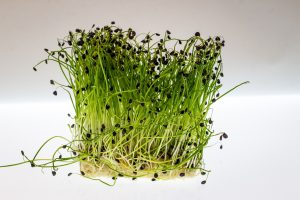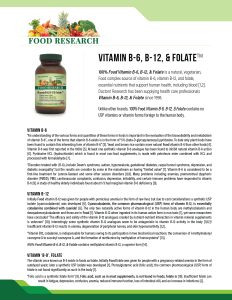What are GMOs? Are there any risks? If so, what are some of those risks?
This article will attempt to answer those and other questions.
What Are GMOs?
GMOs are Genetically-Modified Organisms. Basically scientists change the genetic code of a plant or animal, often by including part of the genetic code of a different species into it.
Here is one definition and comments:
What are GMOs?
GMOs, or “genetically modified organisms,” are plants or animals that have been genetically engineered with DNA from bacteria, viruses or other plants and animals. These experimental combinations of genes from different species cannot occur in nature or in traditional crossbreeding.Virtually all commercial GMOs are engineered to withstand direct application of herbicide and/or to produce an insecticide. Despite biotech industry promises, none of the GMO traits currently on the market offer increased yield, drought tolerance, enhanced nutrition, or any other consumer benefit. http://www.nongmoproject.org/learn-more/
GMOs (also referred to as genetically-engineered foods) are intended to increase crop yield and tend to support the profitability of a USA-based company called Monsanto (and another company, the Switzerland-based Syngenta).
Monsanto and USA government officials tends to insist that GMOs are safe.
Which Items in the Food Supply Have GMOs?
GMOs are sold in grocery and other food stores.
More and more foods and products are being genetically engineered or contain genetically engineered ingredients. Here are eight of the most common to look out for. If a product contains these ingredients and is not labeled non-GMO Verified or Organic Certified, there’s a good chance it contains GMOs:
- Alfalfa
- Canola
- Corn
- Cotton
- Papaya
- Soy
- Sugar Beets
- Zucchini and Yellow Summer Squash
ALSO high-risk: animal products (milk, meat, eggs, honey, etc.) because of contamination in feed…
What product ingredients commonly contain genetically engineered crops?
Amino Acids, Aspartame, Ascorbic Acid, Sodium Ascorbate, Vitamin C, Citric Acid, Sodium Citrate, Ethanol, Flavorings (“natural” and “artificial”), High-Fructose Corn Syrup, Hydrolyzed Vegetable Protein, Lactic Acid, Maltodextrins, Molasses, Monosodium Glutamate, Sucrose, Textured Vegetable Protein (TVP), Xanthan Gum (http://action.greenamerica.org/p/salsa/web/common/public/signup?signup_page_KEY=7626&gclid=CMTz9bigzbcCFWIV7Aod2V0AEw)
The first GMO in the food supply was the “Flavor Savr” tomato in 1994, but it was not a particular commercial success, and left the food supply in 1997. The company that introduced it, Calgene, was later acquired by Monsanto. Genetically modified (GM) items are all around in the USA.
Notice that synthetic vitamin ingredients, such as Ascorbic Acid, which most companies tend to call Vitamin C, are often GMO (probably because they tend to come from GM-corn.
Frankenstein and GMOs
It is not just plants that are affected by the GMO world.
In Canada, they display some “spider goats”:
Two genetically engineered (also called genetically modified or GM, transgenic) goats are now on display at the Canada Agriculture Museum, Central Experimental Farm in Ottawa. The goats were engineered with genetic material from spiders to create spider silk from their milk, for making military grade textiles. (http://foodfreedomgroup.com/2012/04/01/canada-promotes-transgenic-goats-at-ag-museum/ viewed 06/05/13)
Mixing arachnids with goats seems naturally crazy. Health Canada is also considering approving some type of GMO pig so it will have less phosphorus in its feces.
There have also been GMO experiments to put human genes into cows to make a different type of baby formula, sponge genes into potatoes so that the top portion will wilt to alert farmers when they need to irrigate, mixing mouse genes with cows, etc.
GMOs may be able to destroy the natural environment and produce odd type of plants, and possibly people. Notice the following from Harvard and the World Health Organization (WHO):
Modified organisms can, in addition, escape from greenhouses and fields and aquaculture cages into natural, or quasi-natural, ecosystems, and disrupt their biodiversity.
GM foods may also damage biodiversity, for example, by promoting greater use of certain pesticides associated with GM crops that are particularly toxic to many species, and by introducing exotic genes and organisms into the environment that may disrupt natural plant communities and other ecosystems. (Harvard. Genetically Modified Foods. ©2012 Presidents and Fellows of Harvard College. Published by the Center for Health and the Global Environment. http://chge.med.harvard.edu/topic/genetically-modified-foods viewed 06/05/13)
Gene transfer. Gene transfer from GM foods to cells of the body or to bacteria in the gastrointestinal tract would cause concern if the transferred genetic material adversely affects human health. This would be particularly relevant if antibiotic resistance genes, used in creating GMOs, were to be transferred. …the probability of transfer is low…
Outcrossing. The movement of genes from GM plants into conventional crops or related species in the wild (referred to as “outcrossing”), as well as the mixing of crops derived from conventional seeds with those grown using GM crops, may have an indirect effect on food safety and food security. This risk is real, as was shown when traces of a maize type which was only approved for feed use appeared in maize products for human consumption in the United States of America…
Issues of concern include: the capability of the GMO to escape and potentially introduce the engineered genes into wild populations; the persistence of the gene after the GMO has been harvested; the susceptibility of non-target organisms (e.g. insects which are not pests) to the gene product; the stability of the gene; the reduction in the spectrum of other plants including loss of biodiversity; and increased use of chemicals in agriculture. The environmental safety aspects of GM crops vary considerably according to local conditions. (WHO. 20 questions on genetically modified foods. World Health Organization. http://www.who.int/foodsafety/publications/biotech/20questions/en/ viewed 06/05/13)
Also, GMOs may contaminate the natural environment, produce unnatural plants, cause humans to get genetically affected, and are a risk to food security.
Bees and GMOs
There have been massive drops in the honey bee population. So much so, some have suggested that the food supply of the USA, for example, is at risk (see Nearly One Third of American Bees Died: Is Famine Coming to the USA?).
It is such a concern overseas that the Europeans have banned certain pesticides for three years to see if that may help their population recover. But it is not just Americans and Europeans that have concerns. Russia is very concerned as the following shows:
The shocking minutes relating to President Putin’s meeting this past week with US Secretary of State John Kerry reveal the Russian leaders “extreme outrage” over the Obama regimes continued protection of global seed and plant bio-genetic giants Syngenta and Monsanto in the face of a growing “bee apocalypse” that the Kremlin warns “will most certainly” lead to world war.
According to these minutes, released in the Kremlin today by the Ministry of Natural Resources and Environment of the Russian Federation (MNRE), Putin was so incensed over the Obama regimes refusal to discuss this grave matter that he refused for three hours to even meet with Kerry, who had traveled to Moscow on a scheduled diplomatic mission, but then relented so as to not cause an even greater rift between these two nations.
At the center of this dispute between Russia and the US, this MNRE report says, is the “undisputed evidence” that a class of neuro-active insecticides chemically related to nicotine, known as neonicotinoids, are destroying our planets bee population, and which if left unchecked could destroy our world’s ability to grow enough food to feed its population.
So grave has this situation become, the MNRE reports, the full European Commission (EC) this past week instituted a two-year precautionary ban (set to begin on 1 December 2013) on these “bee killing” pesticides following the lead of Switzerland, France, Italy, Russia, Slovenia and Ukraine, all of whom had previously banned these most dangerous of genetically altered organisms from being used on the continent.
http://www.eutimes.net/2013/05/russia-warns-obama-global-war-over-bee-apocalypse-coming-soon/
Bees are needed to pollinate many foods. Losses of bees truly put the human food supply at risk. Syngenta recognizes a problem with bees, but does not seem to believe that its products are part of the problem:
There is a lot of publicity throughout Europe blaming pesticides called neonicotinoids for the decline in honey bees and other pollinators…It is clear that the honey bee, which is vital to farming and food production, is beset by a range of different and complicated health threats. (Plight of the Bees. http://www.syngenta.com/eame/plightofthebees/en/Pages/home.aspx viewed 06/05/13)
The interaction between agriculture and bees is a sensitive one. The balance is very precise, as is the ecology…In the past few years, Europe has experienced a decline in the health of managed honey bees which has resulted in damage to colonies and populations. Many different possible causes have been suggested and promoted. But the overall scientific consensus is that the health decline is caused by many different factors acting together, and principal among them are the parasitic mite Varroa, viruses carried by mites, Nosema ceranae, and the loss of suitable habitats and nutrition. The declines in Europe and the USA are not replicated in other regions. (Plight of the Bees. http://www.syngenta.com/eame/plightofthebees/en/causes/Pages/causes.aspxviewed 06/05/12)
At least Syngenta recognizes that the ecological balance needs to be precise. Yet, adding GMOs into the mix affects the ecological balance.
An Improper Defense of GMOs
Some contend that GMOs are essentially identical to real food, thus are not a threat. Do they have a point?
Notice the following improper defense of GMOs:
June 5, 2103
Perhaps the most difficult thing about being a science journalist is combating and extinguishing malevolent myths, which always seem to spread faster and further than the actual truth. The largest falsehood currently in circulation is that GMOs represent a threat – to our health, to our environment and to our food supply. But nothing could be further from the truth.
GMOs are nutritionally indistinguishable from their non-GMO counterparts…Like agriculture or hunting-and-gathering, GMOs leave an impact on the environment. Some of it is bad, like when farmers overuse the herbicide glyphosate, which in turn may speed the evolution of “superweeds.”…
But the science consistently shows that GMOs pose no threat to our health. Therefore, it would make about as much sense to put a warning label on GMO corn as it would to place a warning label on corn grown in Nebraska. In summary, GMOs really aren’t controversial in the scientific community. http://www.usnews.com/debate-club/should-consumers-be-worried-about-genetically-modified-food/the-pervasive-myth-that-gmos-pose-a-threat
While GMOs may not be controversial to the parts of the “scientific community” that does not look into it in depth, as well as scientists affiliated with certain corporations and government entities, the reality is that they are controversial and are not “nutritionally indistinguisable” to there non-GMO counterparts.
The fact is that GMO “foods” are not chemically-identical to non-GMO foods. One reason, for example, is that many produced by Monsanto are designed to be resistant to their trademarked herbicide called Round-Up. Round-Up kills most non-GMO plants, but not the ones that Monsanto sells that are “Round-Up” resistant.
Thus, they cannot be nutritionally-identical because they are not chemically-identical.
Everything with GMOs is Not Good
Some cracks in the vulnerability of GMOs have been discovered.
For example, a type of corn humanly engineered to thwart a certain bug now has resistance to what was supposed to kill it:
Monsanto Corn Plant Losing Bug ResistanceWall Street Journal – Aug 29, 2011Widely grown corn plants that Monsanto Co. genetically modified to thwart a voracious bug are falling prey to that very pest in a few Iowa fields, the first time a major Midwest scourge has developed resistance to a genetically modified crop.
The discovery raises concerns that the way some farmers are using biotech crops could spawn superbugs.
Iowa State University entomologist Aaron Gassmann’s discovery that western corn rootworms in four northeast Iowa fields have evolved to resist the natural pesticide made by Monsanto’s corn plant…http://online.wsj.com/article/SB10001424053111904009304576532742267732046.html?mod=WSJ_hp_LEFTWhatsNewsCollection
This news item provides further secular proof that my long-held beliefs concerning the risks of genetically-modified foods are getting more current scientific validation. Corn, more properly known as maize, is a very important food crop in the USA. Furthermore, as Wikipedia reports, 85% of the US maize crop was genetically modified in 2009. This increased dependance upon genetically-modified organisms (GMOs) for the American food supply is putting the USA at tremendous risk
Superweeds pose GM-resistant challenge for farmers
BBC – Sept 18, 2012US farmers are facing a growing challenge from weeds resistant to chemical sprays, and enduring millions of dollars in losses as a result. The so-called “superweeds” have arisen because of the success of genetically modified crops, which now account for the vast majority of US corn, soya and cotton.Genetically engineered (GE) crops are often discussed as the way to feed the world’s growing populations and to mitigate the affects of climate change. But the spreading of those same genetically engineered traits to weeds is now well documented. Invasive plants become “super weeds” and insects develop resistance to the trait, making them even tougher to fight than they were before the use of GE crops.How Genetically Modified Corn Is Creating Super Worms
There’s “mounting evidence” that Monsanto Co. (MON) corn that’s genetically modified to control insects is losing its effectiveness in the Midwest, the U.S. Environmental Protection Agency said.Monsanto’s worst resistance problem is with crops engineered to tolerate its Roundup herbicide. “Superweeds” that Roundup no longer kills have invaded as many as 20 million acres (8.1 million hectares) of corn and soybeans, according to a Dow study. As many as 28 million acres of cotton, soybean and corn may host Roundup-resistant weeds by 2015, according to Basel, Switzerland-based Syngenta.
Corn fields in four states — Iowa, Illinois, Minnesota and Nebraska — were overrun by rootworm last year, prompting the EPA to say in a November memo that Monsanto’s bug-killing corn may be losing its effectiveness. The agency also said at the time that Monsanto’s program for monitoring suspected cases of resistance was “inadequate.”http://www.bloomberg.com/news/2012-09-04/-mounting-evidence-of-bug-resistant-corn-seen-by-epa.html
I have been warning about GMOs for some time. Back in 1999, I started to get published for my positions against genetically-modified foods (Thiel R. Labeling of genetically modified foods should be a fundamental consumer right. HealthKeepers, 2000; 2 (3):16-19; Thiel R. ANMA’s official position on genetically-modified foods. ANMA Monitor, 1999;3(4)5-8).
GMOs Present Health Risks
Are GMOs safe. Notice the following:
Are GMOs safe?
Most developed nations do not consider GMOs to be safe. In more than 60 countries around the world, including Australia, Japan, and all of the countries in the European Union, there are significant restrictions or outright bans on the production and sale of GMOs. In the U.S., the government has approved GMOs based on studies conducted by the same corporations that created them and profit from their sale. Increasingly, Americans are taking matters into their own hands and choosing to opt out of the GMO experiment…In the U.S., GMOs are in as much as 80% of conventional processed food. Click here for a current list of GMO risk crops.
Some have claimed that rats fed GMO corn developed tumors and organ damage:
Rats fed a lifetime diet of Monsanto’s genetically engineered corn or exposed to the company’s popular Roundup herbicide developed tumors and suffered severe organ damage, according to a French study…The study links varying levels of both the Roundup herbicide and the transgenes in Monsanto’s patented NK603 corn to mammary tumors and severe liver and kidney damage.
The rats were either fed the NK603 corn alone, corn treated with agricultural levels of Roundup, or given water treated with Roundup at low levels commonly found in contaminated drinking water and used in agriculture in the United States. In each group, there were two to three more deaths among female rats compared to control groups, and the rats on the Monsanto diet tended to die more quickly. (Ludwig M. French Study Finds Tumors and Organ Damage in Rats Fed Monsanto Corn. September 19, 2012. http://truth-out.org/news/item/11639-french-study-finds-tumors-and-organ-damage-in-rats-fed-monsanto-corn viewed 06/05/13)
While some have dismissed the above study, the reality is that it is giving humans an indication that GMOs do present health risks. Notice also:
A delegation of politicians and community activists gathered on August 7 in La Leonesa, a small farm town in Argentina, to hear Dr. Andres Carrasco speak about a study linking a popular herbicide to birth defects in Argentina’s agricultural areas.
But the presentation never happened. A mob of about 100 people attacked the delegation before they could reach the local school where the talk was to be held…Carrasco is a lead embryologist at the University of Buenos Aires Medical School and the Argentinean national research council. His study, first released in 2009 and published in the United States this past summer, shows that glyphosate-based herbicides like Monsanto’s popular Roundup formula caused deformations in chicken embryos that resembled the kind of birth defects being reported in areas like La Leonesa, where big agribusinesses depend on glyphosate to treat genetically engineered crops.
The deformations resulted from much lower doses of herbicide than those commonly found on crops, according to the study.
Biotech chemical giant Monsanto patented glyphosate under the trade name Roundup in the 1970’s. (Ludwig M. War Over Monsanto Gets Ugly. November 9, 2010. http://archive.truthout.org/war-over-genetically-modified-crops-gets-ugly-birth-defects-superweeds-and-science-intimidation64915 viewed 06/05/13)
Notice also the following:
“Is Genetically Modified Food Killing Us?” Alex Daley asks in today’s Daily Reckoning. “Probably not,” he confidently responds to his own question. But the worldwide scientific community is slightly less confident. The long-term effects of genetically modified organisms (GMOs) are simply unknowable…
No, the problem with GMOs is not that they might kill us; the problem is that we have no idea how they might kill us. We have no idea if they might harm us quickly, or slowly…or not at all.
More importantly, we have no idea if — down the road — they might catastrophically alter the genetic traits of various organisms — in particular, the human organism. Therefore, the entire GMO experiment promises feast or famine…literally. (Eric Fry)
The new wheat is in early-stage field trials (i.e., it’s been planted to grow somewhere, but has not yet been tested for human consumption), part of a multi-year process on its way to potential approval and not unlike the rigorous process many drugs go through. The researchers conducting this trial are using RNAi to turn down the production of glycogen. They are targeting the production of the wheat branching enzyme which, if suppressed, would result in a much lower starch level for the wheat. The result would be a grain with a lower glycemic index — i.e., healthier wheat.
This is a noble goal. However, Professors Heinemann and Carman warn, there’s a risk that the gene-silencing done to these plants might make its way into humans and wreak havoc on our bodies. In their press conference and subsequent papers, they describe the possibility that the siRNA molecules — which are pretty hardy little chemicals and not easily gotten rid of — could wind up interacting with our RNA.
If their theories prove true, the results might be as bad as mimicking glycogen storage disease IV, a super-rare genetic disorder which almost always leads to early childhood death…the wheat might cause very severe adverse reactions in humans. (Alex Daley) (Daily Reckoning. November 28, 2012)
Here is a report from Harvard:
The decrease in glutelin levels in rice, for example, was associated with an unintended increase in levels of compounds called prolamines, which can affect the nutritional quality of rice and increase its potential to induce an allergic response. (Harvard. Genetically Modified Foods. ©2012 Presidents and Fellows of Harvard College. Published by the Center for Health and the Global Environment. http://chge.med.harvard.edu/topic/genetically-modified-foods viewed 06/05/13)
The fact is that GMOs are not natural foods and pose a lot of health risks. Despite what various science and health professionals wish to imply, the plain truth is much about nutrition is simply not known. What is known is that humans survived on non-GMO foods for millenia. GMOs simply have not been tested enough to insure that they will not cause problems.
Monsanto Has Special Legal Protection
As happens in politics in the USA, a bill that was supposed to do one thing, had an attachment to do something not related to the intent of the bill:
Critics slam Obama for “protecting” Monsanto
There’s no love lost between Washington and the American public, it seems, five days after Congress for the first time in years managed to handle a budget-related issue without reaching the brink of crisis.
Protesters have descended on Pennsylvania Avenue outside the White House this week, enraged at a potentially health-hazardous provision they allege lawmakers inserted surreptitiously into a continuing resolution (CR) that will fund the government through the remainder of the fiscal year. The bill sailed through the Capitol on Friday; President Obama signed it into law on Tuesday.
Opponents have termed the language in question the “Monsanto Protection Act,” a nod to the major agricultural biotech corporation and other like firms geared at producing genetically modified organisms (GMO) and genetically engineered (GE) seeds and crops. The provision protects genetically modified seeds from litigation suits over health risks posed by the crops’ consumption. http://www.cbsnews.com/8301-250_162-57576835/critics-slam-obama-for-protecting-monsanto/
Obama signs ‘Monsanto Protection Act’ written by Monsanto-sponsored senator
United States President Barack Obama has signed a bill into law that was written in part by the very billion-dollar corporation that will benefit directly from the legislation.
On Tuesday, Pres. Obama inked his name to H.R. 933, a continuing resolution spending bill approved in Congress days earlier. Buried 78 pages within the bill exists a provision that grossly protects biotech corporations such as the California-based Monsanto Company from litigation.
With the president’s signature, agriculture giants that deal with genetically modified organisms (GMOs) and genetically engineered (GE) seeds are given the go-ahead to continue to plant and sell man-made crops, even as questions remain largely unanswered about the health risks these types of products pose to consumers. http://rt.com/usa/monsanto-bill-blunt-agriculture-006/
Overseas, this is not making the USA popular.
Around the world, thousands marched against the Missouri-headquartered multinational agricultural biotechnology corporation called Monsanto:
May 26, 2013…
Organizers said “March Against Monsanto” protests were held in 52 countries and 436 cities, including Los Angeles where demonstrators waved signs that read “Real Food 4 Real People” and “Label GMOs, It’s Our Right to Know.”
Genetically modified plants are grown from seeds that are engineered to resist insecticides and herbicides, add nutritional benefits or otherwise improve crop yields and increase the global food supply. Most corn, soybean and cotton crops grown in the United States today have been genetically modified. But critics say genetically modified organisms can lead to serious health conditions and harm the environment. The use of GMOs has been a growing issue of contention in recent years, with health advocates pushing for mandatory labeling of genetically modified products…
Protesters in Buenos Aires and other cities in Argentina, where Monsanto’s genetically modified soy and grains now command nearly 100% of the market, and the company’s Roundup-Ready chemicals are sprayed throughout the year on fields where cows once grazed. They carried signs saying “Monsanto-Get out of Latin America”
In Portland, thousands of protesters took to Oregon streets. Police estimate about 6,000 protesters took part in Portland’s peaceful march, and about 300 attended the rally in Bend. Other marches were scheduled in Baker City, Coos Bay, Eugene, Grants Pass, Medford, Portland, Prineville and Redmond.
Across the country in Orlando, about 800 people gathered with signs, pamphlets and speeches in front of City Hall. Maryann Wilson of Clermont, Fla., said she learned about Monsanto and genetically modified food by watching documentaries on YouTube.
“Scientists are saying that because they create their own seeds, they are harming the bees,” Wilson told the Orlando Sentinel. “That is about as personal as it gets for me.” http://www.usatoday.com/story/news/world/2013/05/25/global-protests-monsanto/2361007/
In order to take full control of the global food chain the world’s largest owner of patents on seeds Monsanto is lobbying, bribing, suing small farmers out of business and altering scientific research, geopolitical analyst F. William Engdahl told RT.
Hundreds of thousands around the world gathered on Saturday in a global move dubbed ‘March Against Monsanto’.
Protesters all across the US joined the march calling for a boycott of Monsanto products, following the Senate’s decision to turn down a bill which requires the labeling of GM food.
RT: What’s wrong with GM food?
William Engdahl: The fundamental problem with GM food that it’s genetically and biologically unstable. There’s no genetic modification known to science and this I have from some of top scientists in the world on this question that’s stable – it’s always mutating. And No.2, all the GM products that are in the human and animal food chain over the last 20 years are modified primarily to do one thing – 80 per cent of all the GM is modified to accept chemicals, the pesticides. Monsanto Roundup being the most prominent of them, which are highly, highly toxic and they’re modified to be resistant to that deadly chemical so that it kills everything inside, except the Monsanto corn or the Monsanto soy beans or what will you. All those chemicals are equally as dangerous to the human food chain as the GMO seeds themselves. http://rt.com/op-edge/monsato-manipulation-food-chain-799/
There are many, many risks with GMO crops.
As far as bees go, their population keeps dropping (see Nearly One Third of American Bees Died: Is Famine Coming to the USA?). Furthermore, there are a lot of unanticipated problems from GMOs. For example, because of the use of GMO corn, the amount of milkweeds have diminished–hence the herbicide intent of GMOs has negative side effect. This in turn has diminished the amount of monarch butterflies as they benefit from milkweed. Additionally, scientists are combining a variety of animal genes as well as creatures like spiders. This is not going to end well. As far as nutritional benefits of GMOs, many of those ‘benefits’ are based upon a lot of assumptions that I do not believe hold up well in the real world and will leave at that for now.
While the supposed intent of GMOs is to increase the food supply and provide crops that are resistant to pesticides, the reality is that the GMO thrust is essentially based upon lust for profits. Notice also the following:
GMOs didn’t come to dominate our agricultural system simply because they’re awesome, and they’re not struggling for acceptance because the public is fearful and/or misinformed. Corporations made billions on GMOs and all we got was ethanol and an unsustainable diet. (Laskawy T. Frankenfoods: Good for Big Business, bad for the rest of us. May 2013 http://grist.org/food/frankenfoods-good-for-big-business-bad-for-the-rest-of-us/ viewed 06/05/13)
The production of GMO crops places massive amounts of the food supply at risk for destruction. While in nature, there is variety of crops, with GMO-crops there is a uniformity that is unnatural. This uniformity puts the entire crop at risk as if one plant succumbs to a pesticide, the entire crop is susceptible as well–this can lead to famines.
While multiple thousands have protested in the USA and internationally, the GMO industry pushes forward.
GMOs Have “Unexpected” Results
Many things associated with GMOs are unknown, and most of what has gone wrong so far was “unexpected” by Monsanto and the government.
In the last few years, however, there have been unsettling “incidents”: a shipment of organic corn from Texas was rejected by France (GMO foods are banned in Europe, Japan, Brazil, and other nations) because it contained the altered genes, apparently the result of pollen drifting from farms growing altered corn onto the fields of the organic farmers; a load of GMO corn not approved for human consumption ended up unannounced in Taco Bell’s corn products; scientists found that Monarch butterflies were sickened and dying from exposure in the Midwest to GMO grain; Mexico, which does not allow GMO corn it its country, has found native varieties deep in the country’s interior to be tainted by Monsanto’s corn pollen, which had drifted hundreds of miles, much farther and in a much quicker time than the industry and our government thought possible. (Hightower J. Frankenfood Corporate bioengineers tinker merrily and dangerously with the DNA of food bioengineers tinker merrily and dangerously with the DNA of food. Utne, June 2004. http://www.utne.com/2004-06-01/frankenfood.aspx#axzz2VMR0LulS viewed 06/05/13)
Although ‘experts’ have claimed that there is no GMO wheat in the food supply, the USA government now has reason to doubt that (note bolding below is from me):
WASHINGTON — A strain of genetically engineered wheat never approved for sale or consumption by authorities was found sprouting on a farm in Oregon, the U.S. Agriculture Department said on Wednesday.
The wheat was developed years ago by biotechnology company Monsanto Co. but never put into use because of worldwide opposition to genetically engineered wheat…
Roughly half of the U.S. wheat crop is exported and most of the crop is used in making food such as breads, pastries, cookies and noodles. USDA officials said the Food and Drug Administration determined years ago there is no health risk to humans from the strain, though.
“Hopefully, our trading partners will be very understanding,” Michael Scuse, the acting U.S. deputy agriculture secretary, said at a briefing with reporters.
Scuse said trading partners and major customers for U.S. wheat had been informed of the discovery over the past day.
Genetically modified crops cannot be grown legally in the United States unless the government approves them after a review to ensure they pose no threat to the environment or to people.
Monsanto entered four strains of glyphosate-resistant wheat for U.S. approval in the 1990s but there was no final decision by regulators because the company decided there was no market.
The genetically modified wheat sprouted this spring on an Oregon farm, in a field that grew winter wheat in 2012.
When the farmer sprayed the so-called “volunteer” plants with a glyphosate herbicide, some of them unexpectedly survived. Samples were then sent to Oregon State University and to USDA for analysis…
Scuse and Michael Firko, who oversees USDA’s biotechnology approval process, said USDA was investigating how the strain appeared on the farm when no seeds should have been available for several years.
“I think it will have a significant impact,” said Ronnie Cummins, national director of the Organic Consumers Association, which battled to keep genetically modified wheat out of the marketplace years ago.
The U.S. Senate last week rejected by a wide margin a measure to allow states to order labeling of food made with genetically engineered, or GE, crops. Cummins said the discovery of the rogue plants in Oregon would accelerate efforts to require GE food labels. (US Finds Unapproved Genetically Modified Wheat in Oregon. Reuters. May 29, 2013. http://www.voanews.com/content/us-unapproved-genetically-modified-wheat-oregon/1670962.html viewed 05/29/13)
There are many, many risks with GMO crops. Notice that this crop allegedly occurred because “some of them unexpectedly survived.”
No matter what the USA government or other officials claim, there is no humanly possible way to guarantee that genetically-modified organisms ” no threat to the environment or to people.”
The fact that this GMO strain of wheat survived when presumably USA government and/or Monsanto scientists did not think that it could is further proof (there have been other “unexpected” incidents as well).
Some of the results are affecting the USA economically:
It has already begun: Japan has just cancelled a large contract to purchase U.S. wheat. “We will refrain from buying western white and feed wheat effective today,” Toru Hisadome, a Japanese farm ministry official in charge of wheat trading, told Reuters…Now we’re already seeing the result: the ditching of U.S. wheat by world nations that want nothing to do with GMOs.
Monsanto is a ticking time bomb for U.S. agriculture
This proves, without any question, that Monsanto’s genetic experiments which “escaped” into commercial wheat fields are now going to devastate U.S. wheat farmers. Expect the floor to drop out on wheat prices, and watch for a huge backlash against the USDA by U.S. farmers who stand to lose hundreds of millions of dollars on this.
As the USDA has now admitted, Monsanto’s GMO experiments from 1998 – 2005 were held in open wheat fields. The genetically engineered wheat escaped and found its way into commercial wheat fields in Oregon (and possibly 15 other states), causing self-replicating genetic pollution that now taints the entire U.S. wheat industry.
“Asian consumers are keenly sensitive to gene-altered food, with few countries allowing imports of such cereals for human consumption,” writes Reuters. It continues:
Asia imports more than 40 million tonnes of wheat annually, almost a third of the global trade of 140-150 million tonnes. The bulk of the region’s supplies come from the United States, the world’s biggest exporter, and Australia, the No. 2 supplier. Another incredible Monsanto achievement: the genetic contamination of the U.S. wheat supply
Nice job, Monsanto. You’ve managed to spew your genetic pollution across the fields of innocent U.S. farmers who are now going to lose huge sums of money due to the reject of U.S. wheat by all the other world nations that refuse to feed their populations GMO…
Genetically modified wheat is only the beginning. Monsanto has no doubt unleashed genetic pollution across many other crops as well. We’re now living in an age where Monsanto is essentially ejaculating its patented seed across all the farms of America, then claiming to “own” the contaminated crops. (Adams M. Monsanto is a Ticking Time Bomb for U.S. Agriculture: Japan halts Imports of U.S. Wheat after USDA’s Finding of Genetic Pollution from GMOs. Natural News, June 2, 2013. http://www.globalresearch.ca/monsanto-is-a-ticking-time-bomb-for-u-s-agriculture-japan-halts-imports-of-u-s-wheat-after-usdas-finding-of-genetic-pollution-from-gmos/5337283 viewed 06/02/13).
There are many risks of GMOs. And what may happen to the USA because of them will also be considered as “unexpected” by most government officials.
Are GMOs Putting the USA at Risk for Famine?
Notice also:
Now it appears that GMO crop failures are growing. Do we face the risk of famine as well?
In 2009 the South African Corn Crop Failure was linked to GMO seeds(1). “On January 17 [2010], internationally recognized plant pathologist Dr. Don Huber, wrote a letter to USDA Secretary Tom Vilsack warning of the discovery of a new pathogen and a possible link between Roundup Ready® (GMO) corn and soybeans and severe reproductive problems in livestock as well as widespread crop failure.”(2)This past March, scientists with the Natural Society called for immediate action to stop the GMO crop failure threat(3).
The USDA did nothing…
The Biotech system, that provides through “user fees” most of the FDA and USDA budget, can never be questioned.
Could it be, though, that GMO cloned monoculture itself is to blame? Are these chimeric species failing when they face stressed conditions?…
GMOs literally invade natural species and infect them with “alien” DNA. We need to rid the planet of these dangerous species that could lead to famine if not checked. (Bert G. Famine in America. July 11, 2012. http://drrimatruthreports.com/gmo-corn-crops-failing-in-the-usa-famine-to-follow/ viewed 06/05/13)
As the above suggests, the reality is that hunger is not just something that will affect children and poor outside the USA.
Concluding Comments
GMOs are not real food. Humans are supposed to eat real foods.
The increasing reliance on genetically-engineered “foods” is putting the USA’s food supply at risk.
The consumption of synthetic vitamins is one way that many in the USA consume GMOs.
Do you avoid GMOs? Something to think about.




























